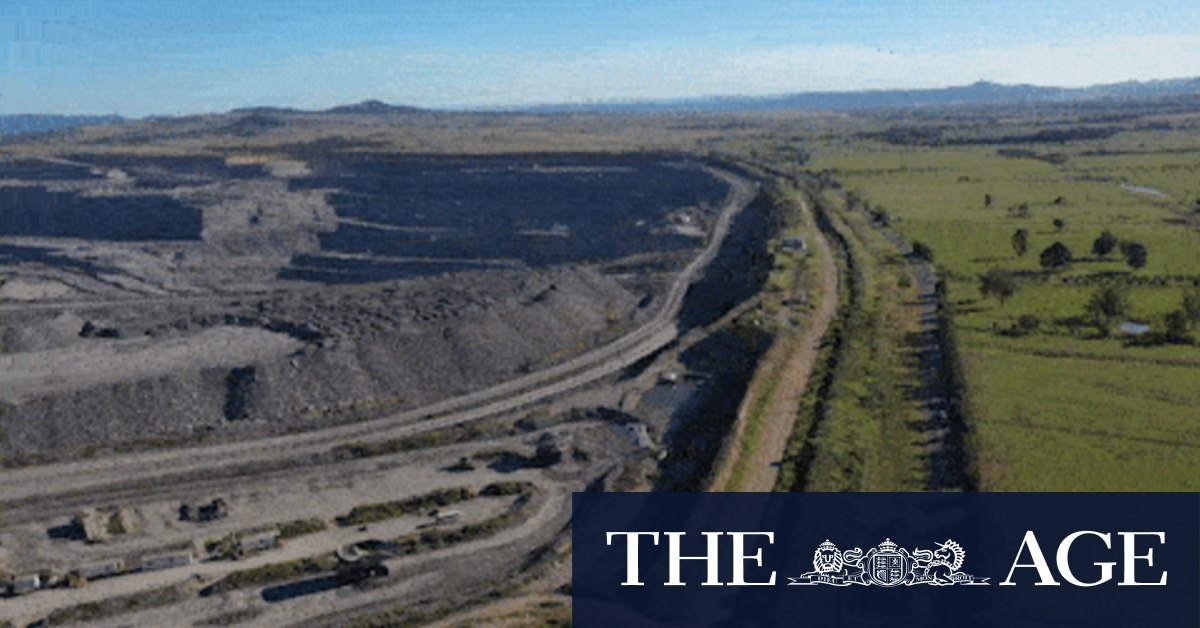Negative value BHP struggles to offload NSWs biggest coal pit

Mining giant BHP would pay a bidder about $275 million to take the biggest coal mine in NSW off its hands even as prices of the fossil fuel soar to levels not seen since 2008.
BHP has been shopping its Mt Arthur coal mine near Muswellbrook for more than a year, and on Wednesday slashed its value from about $550 million to a liability of $275 million.
BHP’s Mt Arthur coal mine near Muswellbrook in NSW’s Hunter Valley. The mining giant says it has slashed the value of the state’s biggest mine to a liability of $275 million as it tries to find a buyer.Credit:Janie Barrett
The reduction, coming seven months after it dropped $1.6 billion off the book value of the mine, is also an indication of the huge costs of rehabilitation the new owner will have to bear, analysts said. These include $40 million owed to Muswellbrook Shire Council for a road that BHP dug up, a council official said.
“It did surprise us â€" we did have a positive value on Mt Arthur,†Rory Simington, from energy analysts Wood Mackenzie, said. “It represents BHP’s view of the thermal coal market and the difficulty of the sales process.â€
Thermal coal prices are running about $220 a tonne for Hunter Valley coal. Wood Mackenzie has a long-run price target of about $110 per tonne, while others have it closer to $82, Mr Simington said.
BHP has accelerated its exit from fossil fuels after it announced it was selling its oil and gas assets with Woodside. It offloaded its Cerrejon coal mine in Colombia in June.
David Lamont, the company’s chief financial officer, said Mt Arthur’s negative value “is reflective of the rehab and restoration side of thingsâ€.
“It’s not material in the overall scheme of things,†he said. “In relation to the sale process we’ve got, that’s still running.â€
Mr Simington said the revision probably reflects the size of bids the miner has been receiving from potential owners.
China’s Yancoal, Indian-owned Adani have been named previously as potential buyers of Mt Arthur, while Indonesia’s Sinar Mar is reported to have been a recent suitor that turned away.
Tim Buckley, an analyst with the Institute for Energy Economics and Financial Analysis, said “there are no real, credible buyers of that mineâ€.
“Whether it’s insurance, equity or debt, capital is fleeing the thermal coal sector,†Mr Buckley said.
One deterrent is the size of the rehabilitation tab. The operation has seen about 15 tonnes of earth moved for every tonne of mined coal, he said. Mt Arthur is producing about 16 million tonnes of coal a year.
Muswellbrook Council’s general manager Fiona Plesman said the council had bank guarantees secured for about $40 million for the restoration of Edderton Road: “Any security entered into by a new owner will need to be similarly secured.â€
“With respect to the mine’s rehabilitation liabilities, council’s preference is that these obligations are jointly those of both the existing holder and any new holder,†Ms Plesman said.
The council has also met with the miner’s plans to extend the Mt Arthur mine from the end of its licence in June 2026 for a further 19 years.
A BHP spokesman said the approval process for the mine extension is ongoing. He said 12 months ago the company gave itself two years to work through the sale.
The NSW Minerals Council declined to comment on the longer-term thermal coal outlook.
A spokeswoman for NSW Deputy Premier John Barilaro said the government had a clear plan “for coal mining in the state and the responsible development of the state’s high-quality coal resources†to ensure jobs and economic development in regional communities for decades.
“The NSW government currently holds around $3.3 billion in security deposits for the rehabilitation of mining impacts,†she said.
Georgina Woods, Lock the Gate Alliance’s NSW spokeswoman, said BHP had made billions of dollars from the mining of coal and gas.
“If BHP is serious about addressing climate change, it will close and rehabilitate the Mt Arthur mine in 2026 when its consent expires,†she said.
“Mount Arthur is the largest single rehabilitation task in the Hunter coal industry,†she said. “The Hunter and NSW cannot afford to let BHP sell the site to a smaller, less accountable buyer to make the mess bigger and riskier.â€
With Nick Toscano
The Morning Edition newsletter is our guide to the day’s most important and interesting stories, analysis and insights. Sign up here.
Peter Hannam writes on environment issues for The Sydney Morning Herald and The Age.
0 Response to "Negative value BHP struggles to offload NSWs biggest coal pit"
Post a Comment